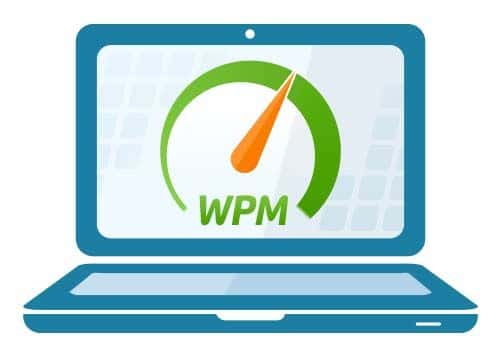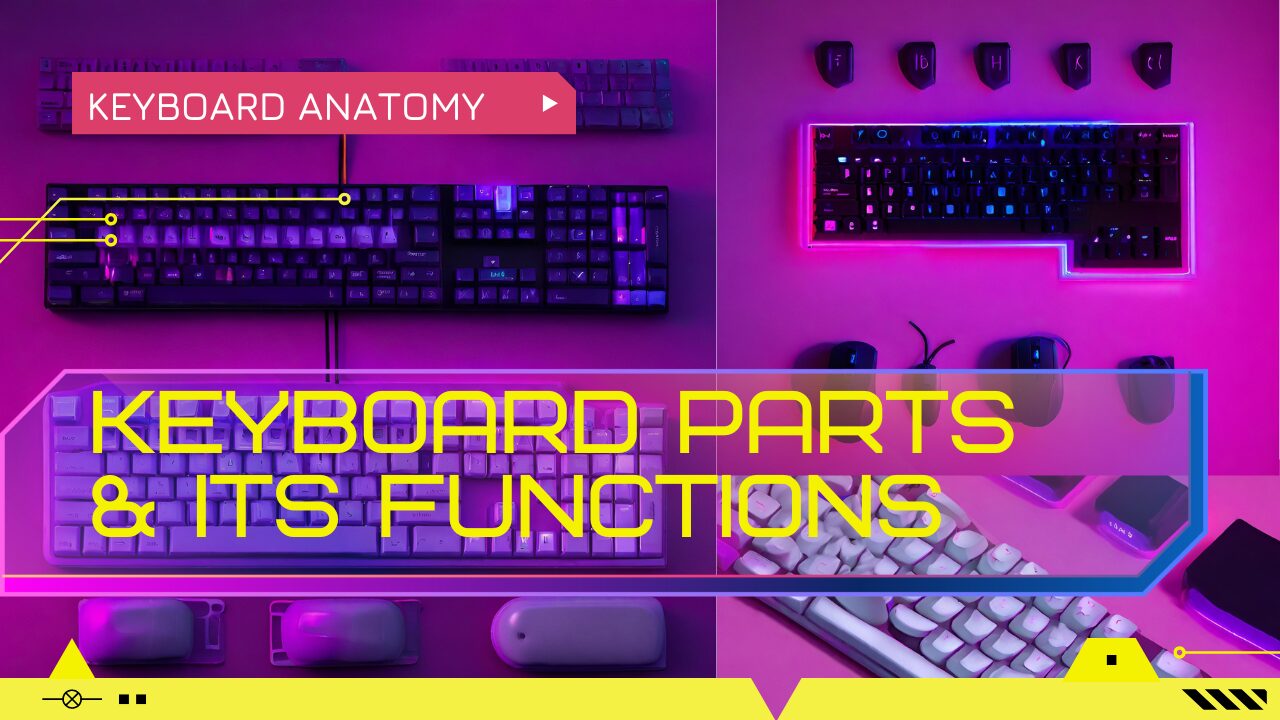As technology advances, typing has become an essential skill in our daily lives. Whether you are a student, professional, or someone who uses a computer regularly, improving your typing speed can significantly enhance your productivity and efficiency. Typing speed is measured by the number of words one can accurately type within a minute (WPM).
In this article, we will discuss the benefits of fast typing speed and pro tips to help you master keyboard typing and unlock your full potential.
The Benefits of Improving Your Typing Speed

Improving typing speed offers myriad benefits that enhance your digital experience and productivity. Here are some key highlights:
1. Time Efficiency: Faster typing translates to faster completion of tasks, freeing up valuable time for other pursuits. Imagine completing emails, reports, or even coding projects in a fraction of the time!
2. Reduced Strain and Injury: Proper typing techniques and increased speed can reduce the risk of developing repetitive strain injuries (RSIs) such as carpal tunnel syndrome. Say goodbye to hand fatigue and discomfort!
3. Enhanced Productivity: When you can type quickly and accurately, you spend less time correcting errors and more time focusing on creating content. This is especially beneficial for professionals and students facing deadlines and demanding workloads.
4. Improved Communication: Efficient typing fosters smoother communication through faster responses to emails, messages, and documents. Connect more effectively with colleagues, clients, and loved ones.
5. Boosted Confidence: Mastering keyboard skills builds your confidence in digital abilities, empowering you to take on new challenges and opportunities. Embrace the world of digital possibilities with newfound confidence!
Investing in your typing speed is an investment in your overall digital proficiency and efficiency. Unlock a world of benefits and take control of your digital experience!
Understanding Typing Speed Measurement – Words Per Minute (WPM)

The measurement of how fast a person types is known as words per minute (WPM). It indicates how many words you can type accurately within a minute. The average typing speed for adults is typically around 40 to 60 WPM. Professional typists, however, can reach speeds of 75 WPM or more.
You can use online typing rate tests to measure your typing speed. These tests present random words or sentences you must type quickly and accurately. Once you complete the test, your WPM score is calculated, providing you with a baseline to track your progress.
How to Measure Your Current Typing Speed with Online Typing Rate Tests
Numerous online typing rate tests are available to measure your current typing speed. These tests evaluate your typing accuracy and speed, allowing you to gauge your skill level. Some popular typing rate tests include the Typewriter Speed Test, WPM Typing Tests, and Typing Speed WPM Test.
When taking these tests, ensure you are in a distraction-free environment and focus solely on typing the presented words or sentences. After completing the test, your WPM score will be displayed, giving you an objective measure of your typing speed.
Tips to Improve Your Typing Speed and Accuracy
Now that you have your baseline WPM score, it’s time to unlock your true typing potential. Here are some practical pro tips to help you improve your speed and Accuracy:
- Maintain Proper Sitting Posture: Please sit straight with both feet on the floor. Make sure that your wrists are slightly elevated. This position helps reduce hand strain and promotes a more natural typing motion.
- Familiarize Yourself with the Keyboard: Take the time to learn the placement of each key on the keyboard. This will enable you to type without looking at the keys, significantly improving your speed and Accuracy.
- Practice Regularly: Regular practice is crucial in improving typing speed. Set aside dedicated time daily to practice typing exercises or take online lessons. Practicing consistently can aid in developing muscle memory and enhancing your typing speed.
- Use Online Typing Tutor: An online typing tutor can offer a structured approach to practice typing. They provide typing class lessons and exercises tailored to your skill level, allowing you to improve your speed and Accuracy gradually.
- Focus on Accuracy: While speed is essential, Accuracy is equally crucial. Avoid rushing and concentrate on typing each word correctly. Over time, your speed will naturally increase as you become more proficient.
- Utilize Touch Typing Techniques: Touch typing involves using all fingers and relying on muscle memory to type without looking at the keyboard. Learning touch typing techniques will significantly boost your typing speed and efficiency.
- Utilize Technology to Your Advantage: Several online typing tutors, keyboard games, voice typing, desk setup, and practice websites offer engaging and interactive ways to enhance your typing skills. Explore these resources and incorporate them into your practice routine.
- Keyboard Shortcuts: These are custom combinations of keystrokes that trigger specific actions, saving you time and effort. Master common shortcuts for your frequently used programs and watch your workflow soar!
- Macros: Automated sequences of actions can be programmed to perform repetitive tasks. Imagine effortlessly formatting documents, filling out forms, or even sending personalized emails – the endless possibilities!
By utilizing these expert tips and available resources, you can start a successful journey toward becoming a faster and more accurate typist. Dedication, patience, and a positive attitude are the keys to success.
Typing Practice Techniques to Master Keyboard Typing

Once you’ve embraced touch typing and committed to regular practice, it’s time to explore an effective typing technique that will help you master the keyboard. Here are some strategies to consider:
- Warm-up Exercises:
Before diving into typing tips, warm up your fingers with simple exercises like finger stretches, hand rotations, and finger taps. This exercise helps enhance blood circulation and prepares your hands for typing.
- Focus on Accuracy First:
Prioritizing speed is tempting, but Accuracy is paramount. Start with slow, deliberate typing, ensuring each keystroke is correct. As your Accuracy improves, you’ll naturally gain speed over time.
- Master the Home Row:
The home row refers to the keyboard’s middle row (ASDF JKL;). Familiarity with this row is crucial for touch typing. Practice drills that involve typing words and phrases solely using the home row keys.
- Gradually Introduce Other Keys:
Once comfortable with the home row, introduce progressively the surrounding keys. Use drills incorporating commonly used keys to expand your reach and improve finger coordination.
- Practice Difficult Letter Combinations:
Certain letter combinations can be challenging, especially for beginners. Dedicate time to practicing words or phrases containing these complex combinations, improving your finger flexibility and Accuracy.
- Utilize Typing Games and Activities:
Learning doesn’t have to be dull! Incorporate fun and engaging typing games and activities into your practice routine. This can make learning more enjoyable and boost motivation.
- Timed Typing Challenges:
Set a timer for a specific duration and challenge yourself to type as much as possible. This exercise helps build your speed and endurance.
- Analyze Your Mistakes and Focus on Improvement:
Identify areas where you frequently make errors and dedicate focused practice to overcoming these weaknesses. This targeted approach will help you address specific challenges and improve your typing skills.
By combining dedicated practice with practical techniques and utilizing available resources, you can efficiently master keyboard typing and unlock your full typing potential. To succeed, one must be dedicated, consistent, and committed to continuous improvement.
Different Types of Touch Typing Techniques
Mastering touch typing opens the door to increased speed, accuracy, and efficiency. However, there’s no one-size-fits-all approach to learning this valuable skill. Various touch typing techniques cater to different learning styles and preferences. Let’s explore some popular options:
| Technique | Description | Advantages | Disadvantages | Suitable for |
|---|---|---|---|---|
| Home Row Method | Focuses on mastering the middle row of the keyboard (ASDF JKL;) | Easy to learn, helps build foundation for other techniques | Requires learning a new layout, which can be challenging initially | Beginners |
| QWERTY Finger Assignments | Assigns specific fingers to specific keys based on the QWERTY layout | Familiar layout, easy to transition from | Easier transition from QWERTY potentially improves speed | Beginners |
| Dvorak Keyboard Layout | Assign specific fingers to specific keys based on the QWERTY layout | Potentially improves speed and reduces fatigue | Can feel restrictive and may not be optimal for speed | Experienced typists seeking increased efficiency |
| Colemak Keyboard Layout | Similar to Dvorak, optimizes key placement while retaining some familiar QWERTY elements | It can be slower than two-handed typing | Requires learning a new layout | Experienced typists seeking increased efficiency |
| One-Handed Typing | Focuses on using only one hand for typing | Beneficial for individuals with limited mobility | It can be expensive and may not be suitable for all learning styles | Individuals with specific needs |
| Adaptive Typing Software | Analyzes keystrokes and provides personalized feedback and exercises | Rearrange keys for better balance and efficiency | Tailored learning experience helps identify and address weaknesses | All skill levels |
1. Home Row Method:
This fundamental technique emphasizes mastering the keyboard’s middle row (ASDF JKL;). Focusing on this central area, you develop muscle memory for efficiently typing commonly used letters. Once comfortable with the home row, you can gradually incorporate other keys while maintaining proper finger placement.
2. QWERTY Finger Assignments:
This method assigns specific fingers to keys based on the QWERTY keyboard layout. While this approach can be helpful for beginners, it may feel restrictive for some as it only sometimes utilizes the shortest finger paths.
3. Dvorak Keyboard Layout:
This alternative layout aims to optimize critical placement for better balance and efficiency. The Dvorak layout can improve speed and reduce finger fatigue by rearranging frequently used letters closer to the home row. However, it requires learning a new layout, which can be challenging initially.
4. Colemak Keyboard Layout:
Like Dvorak, the Colemak layout also aims to improve efficiency by rearranging keys based on letter frequency and hand dominance. However, it retains more familiar QWERTY key placements, making it easier to transition from.
5. One-Handed Typing:
This technique uses only one hand for typing, typically the dominant one. While less common, it can benefit individuals with limited mobility or specific needs.
6. Adaptive Typing Software:
Technology can also assist your journey towards mastering touch typing. Adaptive typing software analyzes your keystrokes and provides personalized feedback and exercises to help you improve your speed and accuracy.
Choosing the correct technique ultimately depends on your learning style and preferences. Experiment with different approaches and find one that feels comfortable and allows you to progress effectively.
Resources for Typing Practice – Typing Software and Websites
There are several resources available to help you improve your typing speed. Typing software and websites offer exercises, lessons, and games to enhance typing skills.
Here are some popular and effective typing software and websites to explore:
- Typing Club: https://www.typingclub.com/
- Keybr: https://www.keybr.com/typing-test
- Ratatype: https://www.ratatype.com/
- Typesy: https://www.typesy.com/
- NitroType: https://www.nitrotype.com/
- 10FastFingers: https://10fastfingers.com/typing-test/english
These websites offer various typing tests with different difficulty levels and time durations. Choose a test that suits your current skill level and start typing. The platform will automatically track your speed and accuracy, providing your WPM score and other relevant statistics upon completion.
A typing rate test is an excellent way to establish your baseline and a valuable tool to monitor your progress over time. Regularly retesting yourself helps you identify areas for improvement and gauge the effectiveness of your learning strategies.
Common Mistakes to Avoid While Improving Typing Speed
When striving to improve your typing speed, you must be aware of common mistakes that can hinder your progress. These mistakes include:
1. Looking at the Keyboard: The essence of touch typing is typing without relying on visual cues. Looking at the keyboard slows you down and disrupts your muscle memory development.
2. Focusing on Speed Over Accuracy: While increased speed is desirable, prioritize accuracy in your practice. Building a solid foundation of accuracy will naturally lead to improved speed over time.
3. Using Incorrect Finger Placement: Familiarize yourself with the home row and ensure proper finger positioning on the keyboard. This promotes efficient typing and prevents strain.
4. Poor Posture and Hand Position: Maintain good posture with a straight back and shoulders relaxed. Keep your wrists in a neutral position to avoid fatigue and discomfort.
5. Rushing Through Your Practice: Slow and deliberate practice is crucial for building muscle memory and improving accuracy. Avoid rushing through drills and focus on executing each keystroke correctly.
6. Overtraining and Ignoring Breaks: While consistent practice is essential, avoid overtraining to prevent fatigue and injury. Take frequent breaks to stretch and rest your hands.
7. Neglecting Difficult Letter Combinations: Certain letter combinations can be challenging. Dedicate practice time to these combinations to improve your finger dexterity and build confidence.
8. Failing to Track Your Progress: Regularly monitor your progress through typing rate tests and self-assessment. This helps you identify areas for improvement and stay motivated.
9. Comparing Yourself to Others: Avoid comparing your progress to others, as everyone learns at their own pace. Focus on your individual goals and celebrate your achievements.
10. Lack of Motivation and Consistency: Don’t keep going if you see results immediately. Learning how to type faster takes time and practice. Just keep practicing, and you will eventually see improvement.
By avoiding these common mistakes and adopting the proper techniques, you can navigate the path to becoming a skilled and efficient typist.
The Average Typing Speed and How to Compare Your Progress
As mentioned earlier, The average typing speed for adults is around 40 to 60 WPM. However, it’s essential to note that typing speed can vary depending on your profession and experience level. Professional typists, for example, can achieve speeds of 75 WPM or higher.
Regularly take typing rate tests and record your WPM scores to compare your progress. Over time, you should observe an increase in your typing speed as you practice consistently. Progress takes time, so be patient and celebrate even minor improvements.
Conclusion:
Improving typing speed is a valuable skill that can enhance productivity, efficiency, and overall computer usage experience. You can gradually increase your typing speed and accuracy by implementing the tips and techniques outlined in this article.
Remember, consistent practice is critical. Set aside dedicated time each day to practice typing faster exercises, utilize online resources, and monitor your progress using typing tests. With perseverance and determination, you will master keyboard typing and reap the benefits of increased typing speed.
Following these tips, you can learn to type faster and become a more efficient typist. So what are you waiting for? Start practicing today!



